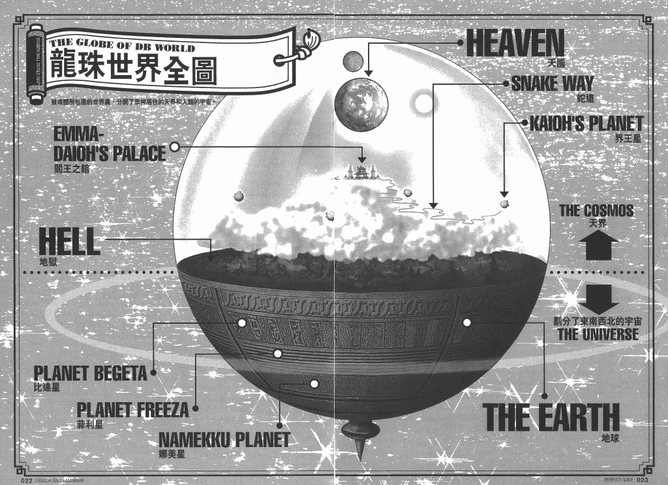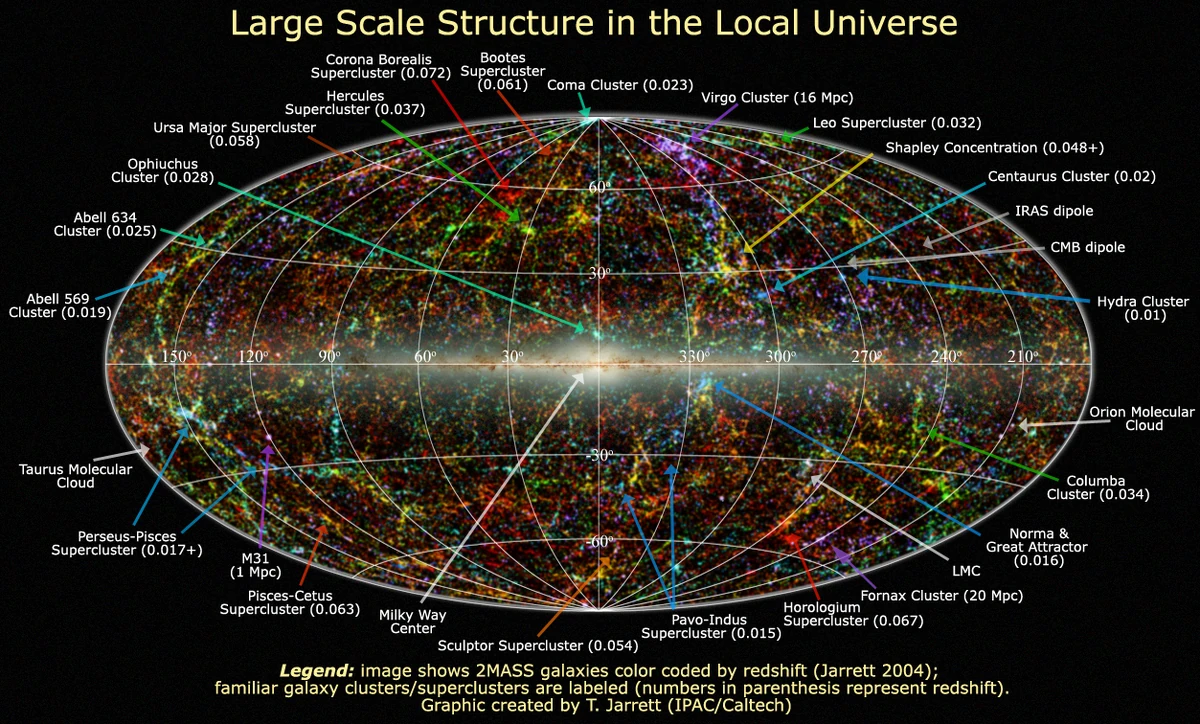I was reading this blog on Dragon Ball cosmology which used this blog to get the size of the universe. While every thing is fine and dandy with this calc I can't help but notice the glaring issue of using observable universe for the size of Dragon Ball's entirety of the universe.
There are issues with this. Map - Not to scale

But, but.....butt.
The real size of the universe is unknown right ? Yeah.
Let's make assumptions. Logical assumptions.
Method 1 -
A article from Forbes based on a oxford research -
We can only make inferences based on the laws of physics as we know them, and the things we can measure within our observable Universe. For example, we observe that the Universe is spatially flat on the largest scales: it's neither positively nor negatively curved, to a precision of 0.25%. If we assume that our current laws of physics are correct, we can set limits on how large, at least, the Universe must be before it curves back on itself.
Observations from the Sloan Digital Sky Survey and the Planck satellite are where we get the best data. They tell us that if the Universe does curve back in on itself and close, the part we can see is so indistinguishable from "uncurved" that it must be at least 250 times the radius of the observable part.
This means the unobservable Universe, assuming there's no topological weirdness, must be at least 23 trillion light years in diameter, and contain a volume of space that's over 15 million times as large as the volume we can observe
While yes this isn't written in stone it's a hellvua lot better than using observable universe.
So assuming that the universe indeed is 23 Trillion light years big and expanding, we get can get a true estimate of the size DB universe.
Method 2 - Infinite Universe.
I mean guides are guides, especially when the writer has borderline memory loss. Even the in canon statements say that the universe is very much limitless.
Anyway by Method 1 the universe 7 will be -
Since I am using the entire estimated size I will use the volume for the lower half of the globe (i.e. the material universe). And since the upper half is as big as the lower half we will say the total globe has 2 times the volume.
Which would be 2.175968e29m radius with a volume of 4.3156454217456E+88 m3.
Around 13,486,391 times more Volume for the center globe than the Observable universe calc.
What do you guys think ?
There are issues with this. Map - Not to scale

- Dragon Ball universe is said to be infinite. There are several in canon and guide statements for this.
- Real world standards
But, but.....butt.
The real size of the universe is unknown right ? Yeah.
Let's make assumptions. Logical assumptions.
Method 1 -
A article from Forbes based on a oxford research -
We can only make inferences based on the laws of physics as we know them, and the things we can measure within our observable Universe. For example, we observe that the Universe is spatially flat on the largest scales: it's neither positively nor negatively curved, to a precision of 0.25%. If we assume that our current laws of physics are correct, we can set limits on how large, at least, the Universe must be before it curves back on itself.
Observations from the Sloan Digital Sky Survey and the Planck satellite are where we get the best data. They tell us that if the Universe does curve back in on itself and close, the part we can see is so indistinguishable from "uncurved" that it must be at least 250 times the radius of the observable part.
This means the unobservable Universe, assuming there's no topological weirdness, must be at least 23 trillion light years in diameter, and contain a volume of space that's over 15 million times as large as the volume we can observe
While yes this isn't written in stone it's a hellvua lot better than using observable universe.
So assuming that the universe indeed is 23 Trillion light years big and expanding, we get can get a true estimate of the size DB universe.
Method 2 - Infinite Universe.
I mean guides are guides, especially when the writer has borderline memory loss. Even the in canon statements say that the universe is very much limitless.
Anyway by Method 1 the universe 7 will be -
Since I am using the entire estimated size I will use the volume for the lower half of the globe (i.e. the material universe). And since the upper half is as big as the lower half we will say the total globe has 2 times the volume.
Which would be 2.175968e29m radius with a volume of 4.3156454217456E+88 m3.
Around 13,486,391 times more Volume for the center globe than the Observable universe calc.
What do you guys think ?

